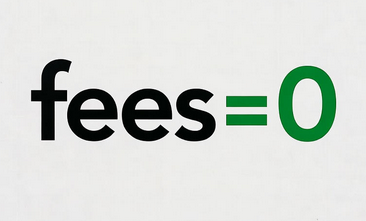State of the Art and Problems of Defeat of Low, Slow and Small Unmanned Aerial Vehicles
DOI:
https://doi.org/10.3849/aimt.01233Keywords:
Low, Slow and Small Unmanned Aerial Vehicles (LSS UAVs), LSS UAVs classification, threats categories of using LSS UAVs, advantages and weak sides of LSS UAVs, hierarchy of countermeasuresAbstract
The article deals with one of the most intensively developing threats for civilian and military spheres – hostile use of Low, Slow and Small Unmanned Aerial Vehicles (LSS UAVs). The classification of the LSS UAVs is given. The existing threats of using LSS UAVs are divided into three categories. Special attention is paid to the third category of threats, the main feature of which is a high level of training of the operator. Main advantages and drawbacks of LSS UAVs are considered. It is determined that the best strategy is to employ a hierarchy of countermeasures including regulatory countermeasures (prevention, deterrence, denial), passive countermeasures (detection and interruption) and active countermeasures (destruction). State of the art and current problems of possible countermeasures are analysed. The most promising LSS UAVs’ counteraction technologies are described. Most attention is paid to specialized sensors and modern active counteraction means, such as programmable air burst munition and high‐energy laser systems.
References
Commercial Unmanned Aerial Vehicle Market Analysis – Industry Trends, Companies and What You Should Know [on line]. BI Intelligence [cited 2017-12-01]. Available from: <http://www.businessinsider.com/commercial-uav-marketanalysis-2017-8>.
BAKER, B. Small Bombs, Big Effect: Arming Small UAVs with Guided Weapons [on line]. Air Force Technology [cited 2017-12-20]. Available from: <https://www.airforce-technology.com>.
MUNDAY, R. GBAD Sensor Mix Optimisation Study for Emerging Threats [Study Report]. NATO: NIAG SG188, 2015, 237 p.
VALAVANIS, K.P. and VACHTSEVANOS, G.J. Handbook of Unmanned Aerial Vehicles. London: Springer, 2015, 3022 p.
FLOREANO, D. and WOOD, R.J. Science, Technology and the Future of Small Autonomous Drones. Nature, 2015, vol. 521, p. 460-466.
MIASNIKOV, E. Threat of Terrorism Using Unmanned Aerial Vehicles: Technical Aspects. [Study Report]. Moscow: Moscow Institute of Physics and Technology, 2005, 26 p.
MUNDAY, R. Engagement of Low, Slow and Small Aerial Targets by GBAD [Study Report]. NATO: NIAG SG170, 2013, 333 p.
Delivery Drone [on line]. Wikipedia, the free encyclopedia [cited 2017-12-04]. Available from: <https://en.wikipedia.org/wiki/Delivery_drone>.
UAV‐Related Events [on line]. Wikipedia, the free encyclopedia [cited 2017-12-04]. Available from: <https://en.wikipedia.org/wiki/UAV-related_events>.
Small Remotely Piloted Aircraft Systems (drones) Mid-Air Collision Study. [Study Report]. London: Crown copyright, 2016, 18 p.
ABBOT, C. Hostile Drones: the Hostile Use of Drones by Non-State Actors against British Targets [Study Report]. London: Remote Control Project, 2016, 20 p.
WARRICK, J. Use of Weaponized Drones by ISIS Spurs Terrorism Fears [on line]. The Washington post [cited 2017-02-21]. Available from: <https://www.washingtonpost.com>.
Non-State Actors with Drone Capabilities [on line]. World of Drones [cited 2017-02-21]. Available from: https://www.newamerica.org/in-depth/world-ofdrones/5-non-state-actors-drone-capabilities/>.
SANDER, A. Game of Drones [Wargame Report]. Washington: Center for a New American Security, 2016, 23 p.
Unmanned Aerial System Threats: Exploring Security Implications and Mitigation Technologies [Hearing Report]. Washington: U.S. Government Publishing Office, 2015, 46 p.
No Fly Zone Database as extracted 4/22/2017 from DJI Go4 apps [on line]. GitHub [cited 2017-05-01]. Available from: <https://github.com/MAVProxyUser/ dji.nfzdb/blob/master/dji.nfzdb.csv>.
WALLACE, R.J. and LOFFI, J.M. Examining Unmanned Aerial System Threats & Defenses: A Conceptual Analysis. International Journal of Aviation, Aeronautics, and Aerospace, 2015, vol. 2, no. 4, p. 1-33.
Missile Technology Control Regime (MTCR) Annex Handbook – 2017 [on line]. Brno: MTCR, 2017, 352 p. [cited 2017-12-11]. Available from: <http://mtcr.info/wordpress/wp-content/uploads/2017/10/MTCR-Handbook-2017-INDEXED-FINAL-Digital.pdf>.
RAVICH, T.M. The Integration of Unmanned Aerial Vehicles into the National Airspace. North Dakota Law Review, 2009, vol. 85, no. 597, p. 597-622.
VISHNEVSKY, S. Potential Capabilities of Radiotechnical Troops Radars to Detect Operational-Tactical and Tactical Unmanned Air Vehicle (in Ukrainian). Science and Technology of the Air Force of Ukraine, 2017, vol. 2, no. 27, p. 92-98.
HARMAN, S.A. and HUME A.L. Applications of Staring Surveillance Radars. In Proceedings of IEEE International Radar Conference. Arlington: IEEE, 2015, p. 270-273.
HINDLE, P. Drone Detection and Location Systems. Microwave journal [on line]. June 2017. [cited 2017-06-15]. Available from: <http://www.microwavejournal. com/articles/28459-drone-detection-and-location-systems>.
SEDYSHEV, Y. and DUDUSH, A. Evaluation of the Impact of the Time Synchronization Accuracy of Multistatic Radar Positions on Errors in Determining the Spatial Coordinates of Aerial Objects. Radioelectronics and Communications Systems, 2013, vol. 56, no. 4, p. 178-185.
WARNKE, H.W. Reconnaissance of LSS-UAS with Focus on EO-Sensors. In NATO Military Sensing STO Meeting Proceedings (STO-MP-SET-241). Canada: STO, 2017, p. 9-3-1–9-3-18.
BAKER, I. and STORIE, K. Detector and Camera Technologies for 3D Active Infrared Imaging. In NATO Military Sensing RTO Meeting Proceedings (RTOMP-SET-130). Orlando: RTO, 2008, p. 26-1–26-10.
KERNS, A.J., SHEPARD, D.P., BHATTI, J.A. and HUMPHREYS, T.E. Unmanned Aircraft Capture and Control via GPS Spoofing. Journal of Field Robotics, 2014, vol. 31, no. 4, p. 617-636.
Oerlikon Ahead Air Burst Technology: Air Burst Munition (ABM) [on line]. [cited 2017-06-15]. Available from: <http://en.calameo.com/books/ 005068186ce3abb3008f7>.
PUDO, D. and GALUGA, J. High Energy Laser Weapon Systems: Evolution, Analysis and Perspectives. Canadian Military Journal, 2017, vol. 17, no. 3, p. 53-60.
Downloads
Published
License
Copyright (c) 2018 Advances in Military Technology

This work is licensed under a Creative Commons Attribution-NonCommercial 4.0 International License.
Authors who publish with this journal agree to the following terms:
1. Authors retain copyright and grant the journal right of first publication with the work simultaneously licensed under a Creative Commons Attribution License that allows others to share the work with an acknowledgement of the work's authorship and initial publication in this journal.
2. Authors are able to enter into separate, additional contractual arrangements for the non-exclusive distribution of the journal's published version of the work (e.g., post it to an institutional repository or publish it in a book), with an acknowledgement of its initial publication in this journal.
3. Authors are permitted and encouraged to post their work online (e.g., in institutional repositories or on their website) prior to and during the submission process, as it can lead to productive exchanges, as well as earlier and greater citation of published work.
Users can use, reuse and build upon the material published in the journal for any purpose, even commercially.






